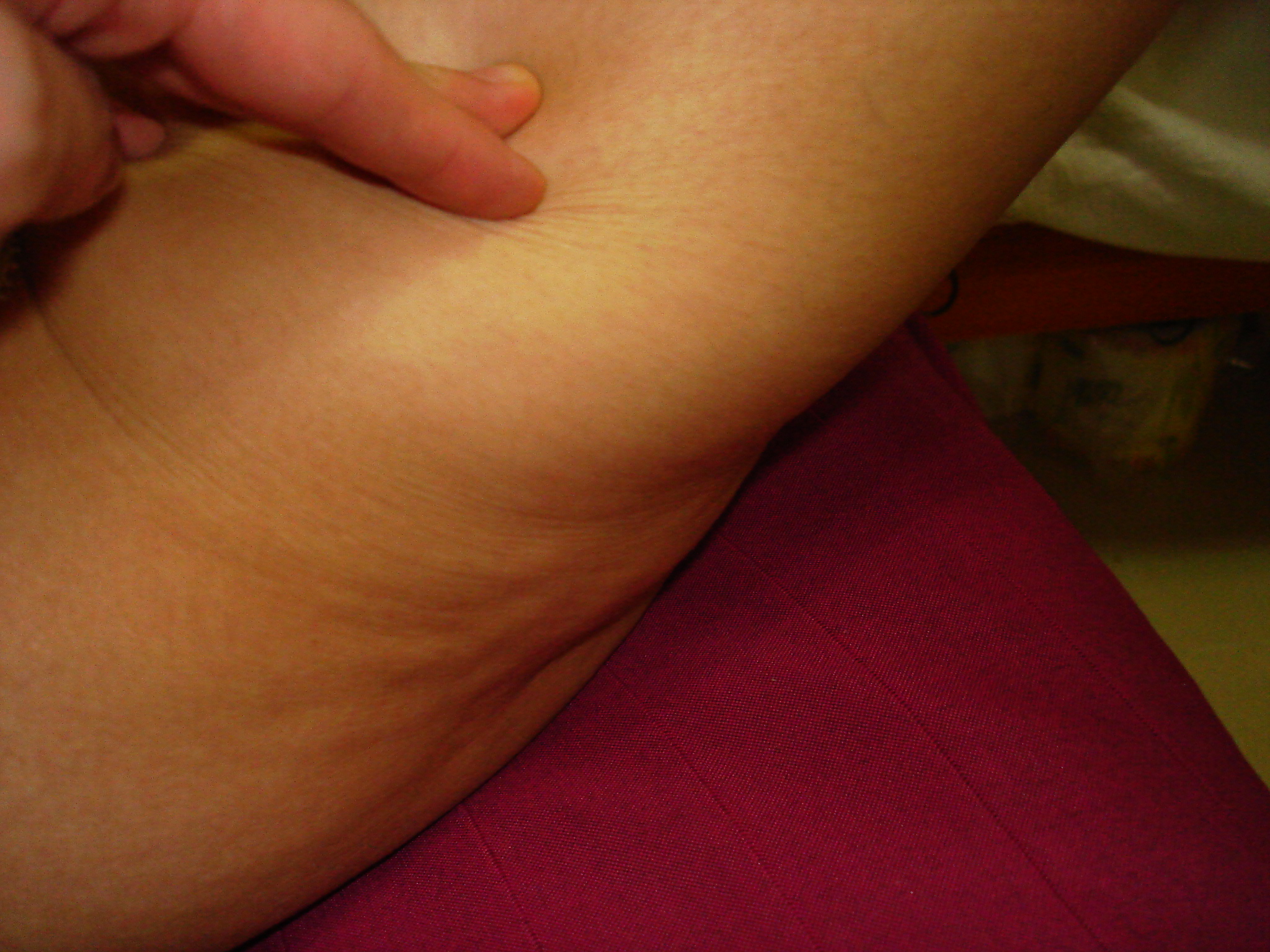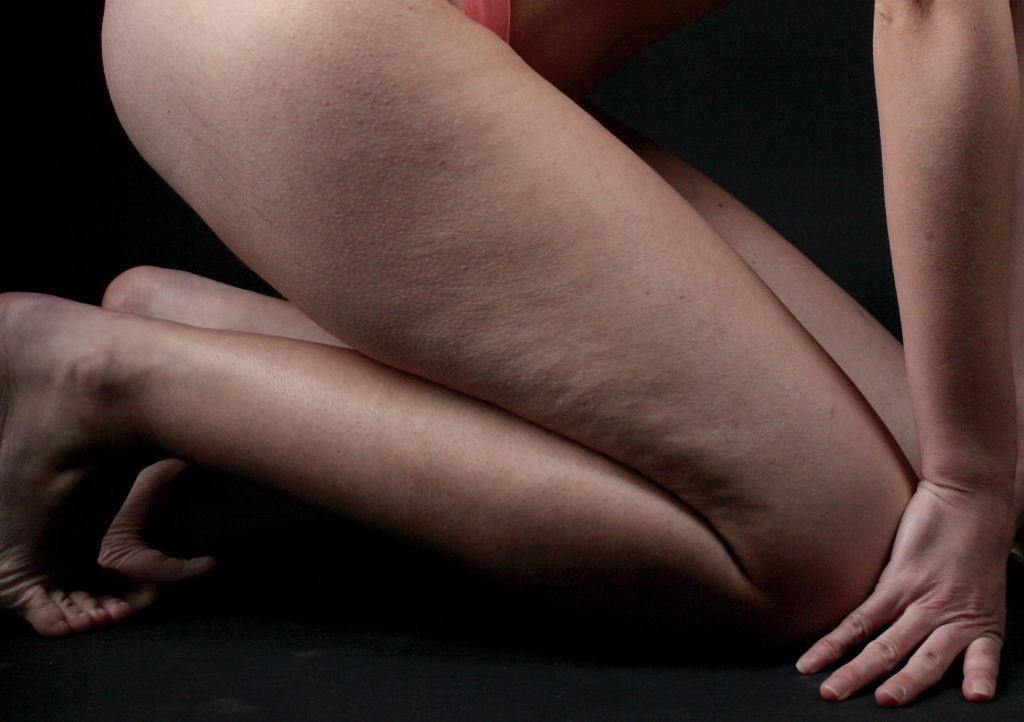Summary
– Step 1: Identify your cellulite type
– Step 2: Eliminate adipose cellulite
– Step 3: Eliminate Aqueous Cellulite
– Step 4: Eliminate fibrous cellulite
Cellulite is the scourge of many women. Housed mainly on the thighs, belly, and hips, it causes an orange peel effect that is often unsightly and can sometimes be very painful to the touch. Here is how to eliminate cellulite.
1. Identify your type of cellulite
Before trying to eliminate your cellulite, it is essential to identify your type of cellulite. There are three forms of cellulite: adipose, aqueous and fibrous.
Adipose cellulite
Adipose cellulite mainly affects women who are overweight. It is most often the result of a diet too rich in sugar and fat.
It is a type of cellulite visible to the naked eye, especially when the skin is pinched; it forms large dimpled areas. To the touch, adipose cellulite is not painful.
Aqueous cellulite
Aqueous cellulite is the cause of water retention in the tissues due to poor circulation in the venous and lymphatic systems.
Aqueous cellulite is therefore often accompanied by a heavy leg effect. To the touch, the skin has an orange peel appearance but remains supple.
Fibrous cellulite
Fibrous cellulite is the most difficult to treat because it has been present for a long time, especially in sedentary people.
Fibrous cellulite is often painful; the skin is hard and can even take on a purplish hue.
2. Eliminate adipose cellulite
For adipose cellulite, it is essential to review your lifestyle and practice massages to mobilize fat cells.
-
- Return to a healthy and balanced diet. In particular, limit cooked fats and sugar.
-
- Prefer homemade dishes rather than industrially produced ones that contain a lot of saturated fatty acids and added sugar.
Get physical exercise
Preferably practice endurance sports, which will help melt stored fat (cycling, walking and running, swimming…).
Note: the body does not start to release stored fat until after 30 minutes of exercise.
Massage the affected areas
The ideal is the palpating-rolling technique: it consists of grasping the skin between the thumbs and the other fingers and then rolling it. Palpating-rolling helps to mobilize fat cells, promote fat elimination, as well as venous and lymphatic circulation.
Use essential oils for massage
To help destocking fats, mix 5 drops of Atlas cedar essential oil and 5 drops of lemongrass essential oil in 95 drops of hazelnut vegetable oil.
Massage the areas concerned morning and evening, every day, with 10 drops of this mixture.
Apply an anti-cellulite cream
This type of cream promotes the elimination of fat. Choose one with caffeine, grape seed extract, or tea.
3. Eliminate watery cellulite
The leading cause of aqueous cellulite is water retention due to poor lymphatic and venous circulation. Several measures can help you remedy this:
-
- Drink at least 1.5 liters of water per day.
-
- Prefer mineral waters that contain little sodium.
-
- You can also include tea and herbal teas such as nettle, rosemary, hibiscus, or ivy for their draining power.
-
- Eat diuretic fruits and vegetables: watermelon, melon, fennel, tomato, parsley, or radish are particularly recommended.
Massage your skin to promote lymphatic circulation

You can practice the palpating-rolling technique yourself.
However, it is the lymphatic drainage technique, a very gentle massage, which is the most effective. Going to a physiotherapist is highly recommended here.
Use an anti-cellulite cream or oil
These products promote circulation. The most effective is based on the red vine, theine, or horse chestnut.
Practice an adapted sport
Water sports such as swimming, aqua gym, or aqua biking promote lymphatic circulation. The water acts as a light massage on the surface of the skin.
Cycling and brisk walking are also recommended.
4. Eliminate fibrous cellulite
Fibrous cellulite, which has been present in tissues for a long time, is challenging to eliminate. Constancy and patience are, therefore, the keywords to see an improvement. Liposuction or laser may tempt you but try less invasive methods first.
Be physically active
As fibrous cellulite is often linked to passive activity, it is advisable to resume regular physical activity gently. Encourage so-called “cardio” sports such as walking, running, cycling, swimming, or fitness.
Rethink your diet
It is essential to eat a healthy and balanced diet.
– Every day, choose fresh fruits and vegetables, preferably seasonal.
– Limit saturated fatty acids and sugars, especially in industrial ready meals.
– Vary the cereals (bread, pasta, quinoa, bulgur, buckwheat…).
– Drink at least 1.5 liters of water per day.
Apply essential oils
Used locally, the essential oils of Atlas cedar and lemongrass promote the destocking of fats. Apply morning and evening 10 drops of a compound mixture (5 drops of each of these essential oils diluted in 95 drops of hazelnut vegetable oil) and gently massage the areas concerned.
Finish your shower with a jet of icy water
Direct the water jet on the affected areas to activate venous and lymphatic circulation and tone the tissues.
Necessary: since fibrous cellulite is often painful to the touch, it is not recommended that you do the palpating-rolling yourself; it is better to turn to a professional, such as a physiotherapist, who will adapt the massage.
You can read more here:
Anti-Cellulite Foods: How It Works
What Is Adipose Cellulite and How to Deal With It?


